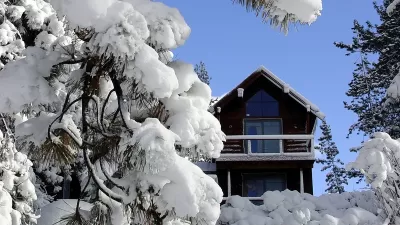The second homes that once laid dormant much of the year, waiting for the next summer or winter vacation getaway, are now a desirable location for baby boomers to retire.
Archie Ingersoll reports that "over the next 10 years, as the baby boomer generation ages, more seasonal residents are expected to transition into year-round lake life, according to a University of Minnesota report released last year."
"Through a survey, researchers found that 56 percent of second-home owners in Otter Tail, Becker, Aitkin, Cass, Crow Wing, Hubbard, Pope and Douglas counties -- an estimated 46,000 households -- have plans to eventually live there full time," reports Ingersoll of this collection of counties in the state of Minnesota.
The article goes into more detail about the consequences of these trends, including a strain on healthcare resources in these areas. Another consequence: home remodels that add more "impervious surfaces like rooftops, driveways and sidewalks, and leaves less natural vegetation to filter rain and keep runoff containing sediment and fertilizers out of the [area's lakes]."
FULL STORY: As baby boomers age, more cabin owners expected to become full-timers at Minnesota lakes

Trump Administration Could Effectively End Housing Voucher Program
Federal officials are eyeing major cuts to the Section 8 program that helps millions of low-income households pay rent.

Planetizen Federal Action Tracker
A weekly monitor of how Trump’s orders and actions are impacting planners and planning in America.

Ken Jennings Launches Transit Web Series
The Jeopardy champ wants you to ride public transit.

Opinion: Transit Agencies Must View Service Cuts as Last Resort
Reducing service could cripple transit systems by pushing more riders to consider car ownership, making future recovery even less certain.

‘Smart Surfaces’ Policy Guide Offers Advice for Building and Maintaining Urban Tree Canopies
Healthy, robust tree canopies can reduce the impacts of extreme heat and improve air quality.

New Jersey Lawsuit Targets Rent-Setting Algorithms
The state of New Jersey is taking legal action against landlords and companies that engage in what the state’s Attorney General alleges is illegal rent fixing.
Urban Design for Planners 1: Software Tools
This six-course series explores essential urban design concepts using open source software and equips planners with the tools they need to participate fully in the urban design process.
Planning for Universal Design
Learn the tools for implementing Universal Design in planning regulations.
Heyer Gruel & Associates PA
Ada County Highway District
Institute for Housing and Urban Development Studies (IHS)
City of Grandview
Harvard GSD Executive Education
Toledo-Lucas County Plan Commissions
Salt Lake City
NYU Wagner Graduate School of Public Service





























